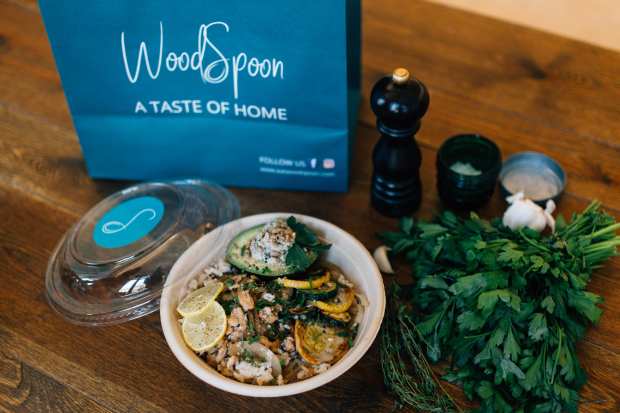WoodSpoon Helps Out-Of-Work Chefs Turn Home Kitchens Into Cash

It’s hard to think of a business that has been hit harder by the pandemic than the restaurant industry, but a New York-based startup is bringing new life to out-of-work chefs by enabling them to work from home (WFH) in their very own kitchens.
Although WoodSpoon’s beta testing predates the pandemic, founder Oren Saar told PYMNTS that things just took off last March when the company officially launched and allowed people to buy locally made meals from a roster of nearby chefs.
“So, it just went boom because all of those people lost their jobs in the restaurant industry and started looking for things to do,” Saar said. “Overnight we went from 10 chefs in three neighborhoods to a waitlist of more than 1,000 chefs looking to join our platform.”
As much as the pandemic catalyzed WoodSpoon’s launch, Saar said the idea of home-based chefs selling their food had been in the works for a year before the virus struck. Whether it was good timing or just dumb luck, WoodSpoon seized the opportunity it was given in New York City, one of the first — and worst — places to deal with the pandemic.
“We were not planning on doing a full launch in March,” he said. “If it was up to us, we would have taken another year to develop the product, but we were like, “OK, it’s our time. This is what we need to do.’”
Chefs Earning Triple From Home
While pandemic-related closures clearly helped WoodSpoon, Saar said his company was not created as a “pandemic idea.” Like many other WFH situations where employees have come to prefer their new remote work life, the same holds true for home chefs, many of whom have better hours and make more money than before. He said some of the company’s chefs are making a little bit more than $10,000 a month every month, which is almost three times more than what they would make working in a restaurant.
In fact, a big part of Saar’s job is proving to chefs that it will be worth their time to stay with WoodSpoon after things reopen.
“We have a short amount of time to prove to home chefs that this is a sustainable model,” Saar said. “If I can prove to [the home chefs] that they’re going to make even more money with WoodSpoon, I did my job.”
Pricing And Delivery
One of the biggest advantages of the WoodSpoon model is that a home chef doesn’t have the expenses, obligations and overhead that a restaurant has. Plus, he said, it lets home chefs focus on what they do best: cook food.
“They don’t want to touch marketing,” Saar said. “They don’t want to touch operations. They don’t want to deal with packaging, go buy bags, go buy containers. They don’t want to do it.”
While he initially considered handling his own delivery, three months on the front lines as a deliveryman in New York City was more than enough to realize that portion of the business was better outsourced. Today, WoodSpoon has white-label arrangements with three or four of the major delivery service providers, which allows customers to track their meals from the same place they ordered and gives WoodSpoon the benefit of competitive bidding.
“I did the deliveries myself for WoodSpoon for the first three months and realized that it’s not that scalable, and I’m not in a position right now to build a second company while I’m building my first company,” he said.
As Saar said he sees it, his job is to make home chefs’ lives as easy as possible, which he does through analyzing everything from ingredient costs to pricing and sharing that info with them. WoodSpoon also has arranged bulk purchasing with local wholesalers to give chefs the best possible pricing.
“If you look at our marketing, I’m trying to sell you a chef,” he said. “I’m not trying to sell you WoodSpoon.”
Health And Safety
“Health and safety is my No. 1 priority,” Saar said, acknowledging the obvious need to address consumer concerns that meals prepared outside of regulated and inspected restaurants are safe.
To that point, WoodSpoon consulted with other companies that tried home-based food delivery, borrowed standards within legislation passed in California, and then layered on their own protocols and practices. Before being approved for the platform, chefs undergo a five-step safety checklist, an onboarding session, a home visit and a food audition. WoodSpoon also provides professional packaging for consistency and branding reasons which also boosts consumer confidence.
On the regulatory side, he said it is still very much a work in progress as cities figure out how to handle something new, much the way they did in the early days of Uber or Airbnb, calling it a “whole new ballgame.” However, given that most chefs are already accustomed to professional food service standards, Saar said he is confident his product is every bit as safe as any other restaurant in town.
“So, from a health and safety perspective, we are probably, I don’t know if I can say the safest, but we are one of the safer places that you can buy food from,” he said.
Letting Chefs Do What Chefs Do Best
With over 10,000 eaters on the platform now picking and choosing from a range of cuisine to suit any imaginable palate, WoodSpoon is looking to use $2 million in seed money to take the service to more diners, with no immediate plans to go beyond city limits. As much as the suburbs would bring orders from families that are five or six times larger, there are logistical and volume concerns that still need to be worked out.
In the meantime, WoodSpoon has begun offering a range of non-perishable canned items from its chefs for delivery around the country as it doubles down in its hometown.
“New York City is a unique place, and it’s also a big market, and we’re really just starting here,” he said.
